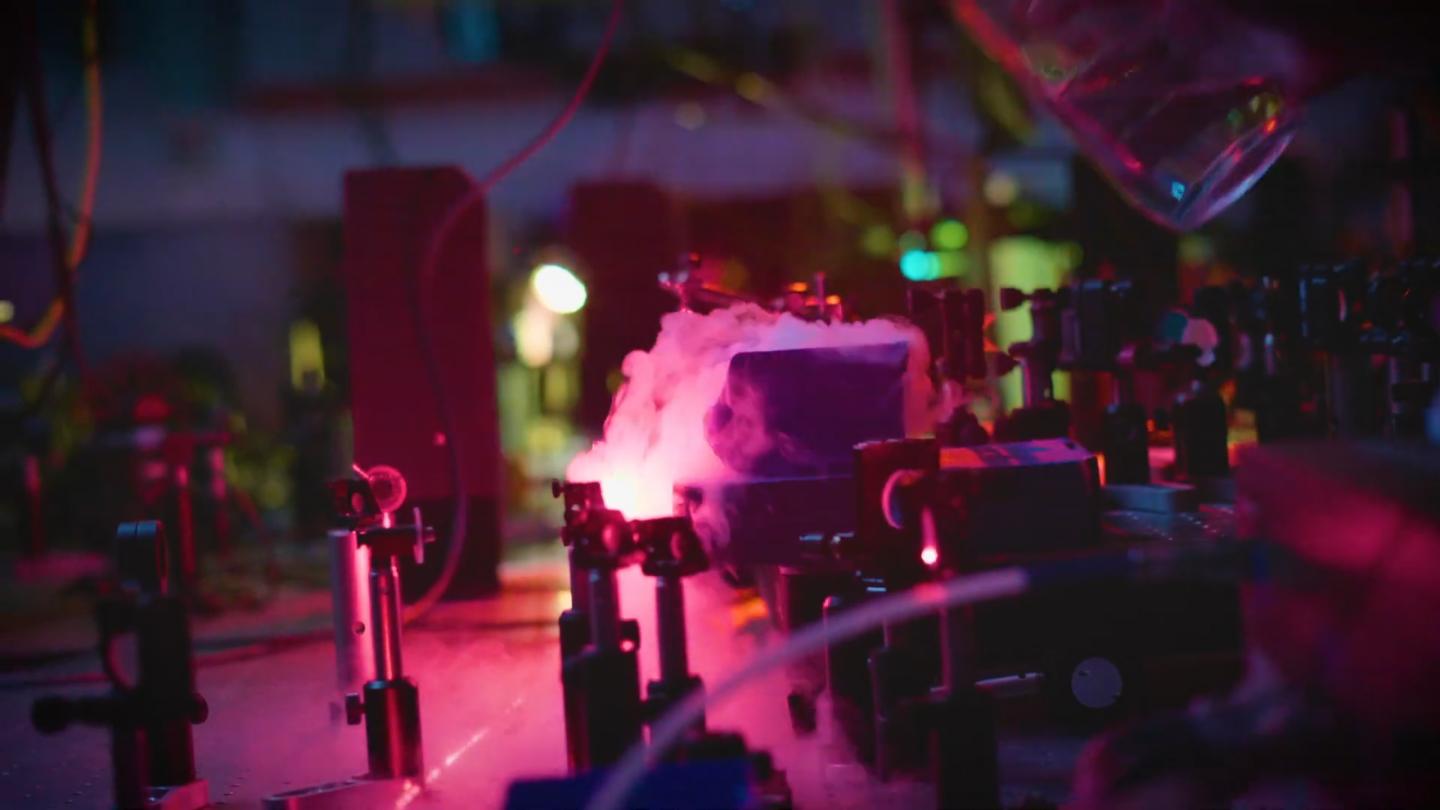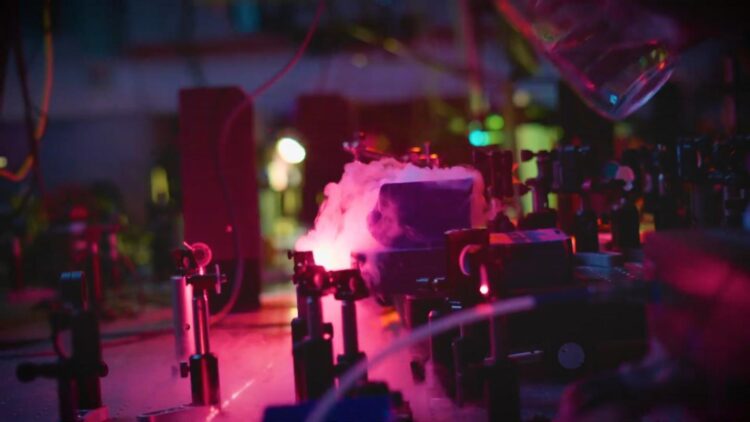
Credit: EPic Lab, University of Sussex
Physicists from the University of Sussex have developed an extremely thin, large-area semiconductor surface source of terahertz, composed of just a few atomic layers and compatible with existing electronic platforms.
Terahertz sources emit brief light pulses oscillating at ‘trillion of times per second’. At this scale, they are too fast to be handled by standard electronics, and, until recently, too slow to be handled by optical technologies. This has great significance for the evolution of ultra-fast communication devices above the 300GHz limit – such as that required for 6G mobile phone technology – something that is still fundamentally beyond the limit of current electronics.
Researchers in the Emergent Photonics (EPic) Lab at Sussex, led by the Director of the Emergent Photonics (EPic) Lab Professor Marco Peccianti, are leaders in surface terahertz emission technology having achieved the brightest and thinnest surface semiconductor sources demonstrated so far. The emission region of their new development, a semiconductor source of terahertz, is 10 times thinner than previously achieved, with comparable or even better performances.
The thin layers can be placed on top of existing objects and devices, meaning they are able to place a terahertz source in places that would have been inconceivable otherwise, including everyday object such as a teapot or even a work of art – opening up huge potential for anti-counterfeiting and ‘the internet of things’ – as well as previously incompatible electronics, such as a next generation mobile phone.
Dr Juan S. Totero Gongora, Leverhulme Early Career Fellow at the University of Sussex, said:
“From a physics perspective, our results provide a long-sought answer that dates back to the first demonstration of terahertz sources based on two-colour lasers.
“Semiconductors are widely used in electronic technologies but have remained mostly out of reach for this type of terahertz generation mechanism. Our findings therefore open up a wide range of exciting opportunities for terahertz technologies.”
Dr Luke Peters, Research Fellow of the European Research Council project TIMING at the University of Sussex, said:
“The idea of placing terahertz sources in inaccessible places has great scientific appeal but in practice is very challenging. Terahertz radiation can have a superlative role in material science, life science and security. Nevertheless, it is still alien to most of the existing technology, including devices that talk to everyday objects as part of the rapidly expanding ‘internet of things’.
” This result is a milestone in our route to bring terahertz functions closer to our everyday lives.”
Lying between microwaves and infrared in the electromagnetic spectrum, terahertz waves are a form of radiation highly sought in research and industry. They have a natural ability to reveal the material composition of an object by easily penetrating common materials like paper, clothes and plastic in the same way X-rays do, but without being harmful.
Terahertz imaging makes it possible to ‘see’ the molecular composition of objects and distinguish between different materials. Previous developments from Prof Peccianti’s team showcased the potential applications of terahertz cameras, which could be transformative in airport security, and medical scanners – such as those used to detect skin cancers.
One of the biggest challenges faced by scientists working in terahertz technology is that what is commonly accepted as an ‘intense terahertz source’ is faint and bulky when compared with, for example, a light bulb. In many cases, the need for very exotic materials, such as nonlinear crystals, makes them unwieldy and expensive. This requirement poses logistical challenges for integration with other technologies, such as sensors and ultrafast communications.
The Sussex team have overcome these limitations by developing terahertz sources from extremely thin materials (about 25 atomic layers). By illuminating an electronic-grade semiconductor with two different types of lasers light, each oscillating at different frequency or colour, they were able to elicit the emission of short bursts of Terahertz radiation.
This scientific breakthrough has been long-sought by scientists working in the field since the first demonstration of terahertz sources based on two-colour lasers in the early 2000s. Two-colour terahertz sources based on special mixtures of gas, such as nitrogen, argon or krypton, are among the best performing sources available today. Semiconductors, widely used in electronic technologies, have remained mostly out of reach for this type of terahertz generation mechanism.
###
The research was developed within the framework of the European Research Council project “TIMING”.
The full research paper, titled, ‘All-Optical Two-Color Terahertz Emission from Quasi-2D Nonlinear Surfaces’ is published in the four star journal, Physical Review Letters, and can be read in full here: https:/
Media Contact
Alice Ingall
[email protected]
Original Source
https:/
Related Journal Article
http://dx.





